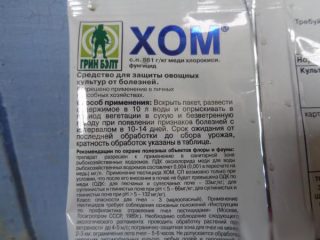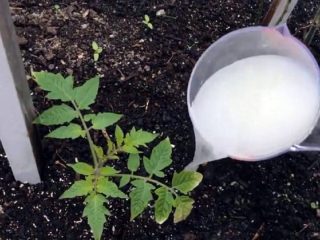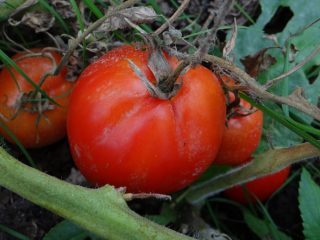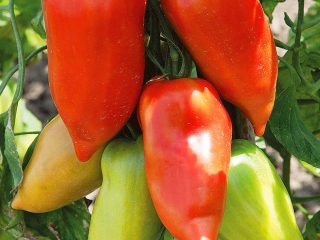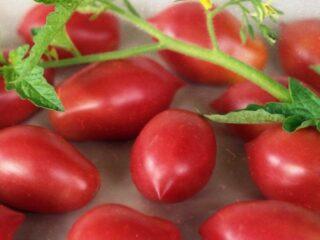Content
Red figs are a variety that surprises with its many advantages: excellent taste, high yield, exemplary appearance, marketability, keeping quality. It is grown by owners of both personal plots and industrial greenhouses. Despite the non-standard shape of the fruit, tomatoes are in high demand on the market. To get the maximum yield, you need to know about the nuances of growing this interesting variety.
History of origin
The Red Fig tomato is a variety that was bred in 2012 by breeders of the Russian seed company Gavrish. As of January 2024, the tomato has not yet been included in the State Register of Breeding Achievements. Despite this, the variety has become quite popular in all regions of the country.
The Red Fig tomato has high commercial qualities and a classic tomato taste, thanks to which it attracts special attention not only from owners of summer cottages, but also from farmers who grow vegetables for sale.
Description of the tomato variety Red fig

The variety got its name for its similarity in shape to the fruits of the mulberry tree, which are called “figs.”
The tomato is valued for its bright red, shiny, elastic fruits, which are not subject to deformation and tolerate transportation well even over long distances. The pulp has a dense, fleshy, sugary texture. The fruits are very tasty, tender, with a barely noticeable pleasant sourness. They are characterized as having a classic tomato taste and aroma. The tomato is self-pollinating, ideal for growing in greenhouses.
Characteristics of tomato Red fig
The tomato belongs to the indeterminate type, its growth is unlimited. To get a good harvest, pinch the top of the stem so that the plant does not waste energy forcing it. The bushes are powerful and very spreading. The stems can reach a height of 1.5 to 2 m, and in greenhouse conditions - up to 3 m. The leaves are large, pale green, with feathery edges.

Red Fig tomato is a mid-season variety
5-6 flowers are tied on one brush. Tomatoes of the Red Fig variety are round and ribbed at the base. The average fruit weight is from 350 to 450 g. The pulp is juicy, fleshy, sugary in texture, covered with a dense skin.
Ripening and fruiting
The Red Fig tomato is a mid-early variety. The ripening period lasts from 105 to 110 days. The fruits begin to ripen in July and can be harvested until August. The timing may vary slightly depending on the climatic conditions in the growing region.
Tomato yield Red figs
This tomato is famous for its excellent yield. One bush can bear up to 8 kg of fruit, and from 1 sq. m you can collect up to 27 kg. In many ways, productivity depends on skillful agricultural technology. With a sufficient amount of nutrients in the soil, the weight of the fruit can be significantly increased (up to 800 g).
Resistance to diseases and pests
The Red Fig variety is practically not susceptible to fungal and viral diseases of nightshades, but can suffer from the appearance of pests. Preventive treatments will help maintain absolute plant health.
Growing regions
Tomatoes are recommended to be grown in the southern regions of the Russian Federation. In other areas, only greenhouse cultivation is possible.
Purpose and application
The Red Fig tomato has high taste qualities, so it is good both fresh and as part of various dishes. It makes delicious tomato juice. It is also used for canning, making sauces, adjika and ketchup.
Advantages and disadvantages
The Red Fig tomato is perfect for those who have a small garden or greenhouse, because you can reap a generous harvest from a small area. It is also worth noting that the tomato is a varietal one. You can collect good planting material from the grown fruits. If you give the plant the necessary nutrition and remove the side shoots in time, the weight of the fruit will exceed the average norm declared by the manufacturer and can reach 800 g or more.

Red fig – large-fruited tomato
Pros:
- classic rich taste;
- high commercial qualities;
- resistance to long-term transportation;
- tender sugar pulp;
- resistance to fruit cracking;
- increased productivity;
- resistance to diseases.
Minuses:
- suitable for southern regions;
- needs nurturing and shaping.
Nuances of planting and care
Red fig tomato seeds can be sown for seedlings in the first half of March. You need to pour soil into a seedling container with a layer of at least 5 cm. Then you can make holes 1 cm deep, put one seed in them and sprinkle with soil. Water carefully with warm, but not hot, water. Next, cover the container with cling film or a transparent lid, and provide the crops with a temperature of at least +25 degrees. When friendly shoots of tomatoes appear, you can gradually open the container for ventilation. You can pick tomatoes only when two true leaves appear. Young sprouts need moderate watering, as waterlogging or drying out can kill them. 21 days before planting tomatoes in open ground, be sure to begin hardening off the seedlings. It should be outside greenhouse conditions, so you should take it outside or onto the balcony for 15 minutes. Gradually the time can be increased to 30 minutes. Three days before planting in the holes, you can water the seedlings with Epin's solution to minimize plant stress and improve its adaptation to new conditions.
The holes themselves should be located no closer than 50 cm from each other, because the bushes of the Red Fig variety are very branched and spreading. After planting, it is important to immediately support the bush so that it grows evenly and the branches do not begin to creep along the ground. The plant should be watered as needed when the soil dries out. The resulting crust must be loosened periodically. The bush needs to be formed, preferably into two stems.To get a good harvest, it is necessary to remove the stepsons. It is also important to provide tomatoes with all the necessary nutrients. During the growing season, the plant must receive nitrogen, potassium and phosphorus. It is necessary to use fertilizers that contain these elements in equal quantities. During the period of fruit set and ripening, the plant needs more potassium and phosphorus.
Diseases and pests
The Red Fig variety has good immunity against many tomato diseases. But it is recommended to carry out preventive treatments. The first spraying should be carried out no earlier than two weeks after planting in open ground. It is carried out with copper-containing preparations, which prevent the appearance of fungal diseases and destroy insect pests if they have managed to appear on the seedlings. The second mandatory step is to spray with biological products containing beneficial microorganisms, for example, Fitosporin or Trichoderma. This treatment can be repeated every 14 days. If pests appear, you need to fight them with appropriate drugs. It is recommended to pay attention to biological insecticides, as they do not harm human health.
Conclusion
The Red Fig tomato is a wonderful variety in all respects. It is definitely worth a try for those who plan to grow vegetables on a small plot of land. The return that a tomato will bring with proper care will pleasantly surprise and delight you. Those who grow the crop for sale should also definitely try this tomato.The harvest will definitely please buyers.
Reviews from gardeners about the tomato variety Red Fig
